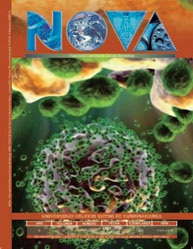NOVA por http://www.unicolmayor.edu.co/publicaciones/index.php/nova se distribuye bajo una licencia Reconocimiento No Comercial- Compartir igual
Así mismo, los autores mantienen sus derechos de propiedad intelectual sobre los artículos,
Declaración de privacidad.
Los nombres y las direcciones de correo electrónico introducidos en esta revista se usarán exclusivamente para los fines establecidos en ella y no se proporcionarán a terceros o para su uso con otros fines.
Health behaviors and risk factors in sexual and reproductive health of a university population. of a University Population
This study, conducted in 2008, aimed to describe risk factors and behaviors of sexual and reproductive health in a university population. We conducted a cross-sectional observational study with a sample comprised of 491 students from a university in Bogota. The results show that females were predominant (63.1%), with an average age of 20.4 ± 2.6 years, 80% began their sexual activity between 15 and 18 years of age. The most widely used contraceptive method is the condom and 37.9% have poor knowledge about contraception. The prevalence of sexually transmitted infections is low, but only half have received treatment. 10% of the population has made testing for human immunodeficiency virus. 10% of the population has presented pregnancies, out of which 75.3% have not been planned and 47.4% have ended in abortion, of which 80% were induced.
There are high numbers of family cancer history. 84% of men do not perform a testicular selfexamination. 56% of women perform breast self-exam. The prevalence of cytology is low (38%), not all women have claimed their outcome and those with abnormalities (78%) received no treatment. 86.9% of students want the university to develop the program of sexual and reproductive health, the preferred medium is consultation and personalized website with online counseling. The analysis of the results allows noting that youth require programs to promote health that lead them to assume their sexuality with autonomy, responsibility, and appropriate information as part of their sexual and reproductive rights.









